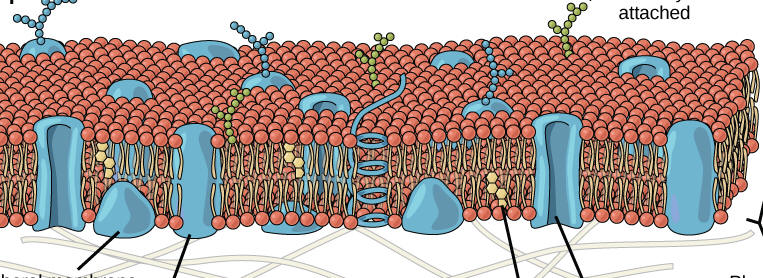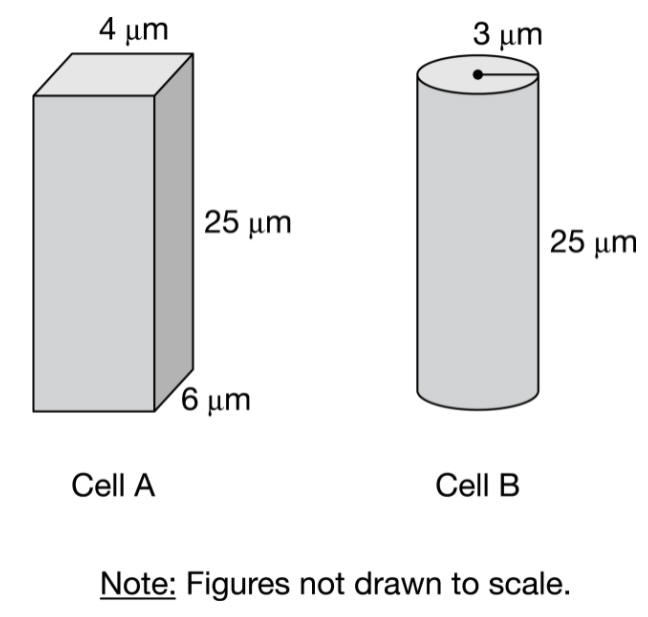Chapter 6-10 Chapter Test Review
Chapter 6: A Tour of the Cell
1. What is cell fractionation?
2.What does a prokaryotic cell contain?
3.What is the structure and function of the
following organelles and what types of cells are they found in: ribosomes,
lysosomes, smooth endoplasmic reticulum, rough endoplasmic reticulum, golgi
bodies, mitochondria, vacoules, vesicles, chloroplasts, nucleus,
nucleolus and microfilaments?
4.Which organelles have membranes and which do not?
5. What is the differences between free ribosomes
and bound ribosomes?
6.What structures are found in only plant cells?
What structures are found only in animal cells?
7.What cell structures produce ATP? under what
conditions?
8.What is the path a protein that is made within
the cell and then secreted out of the cell takes?
9. A spherical bacterial
cell has a radius of 3 Ám. The human egg cell has a radius of
100 Ám. Which cell is able to more efficiently exchange
materials with the external environment ? why?
10. Two different models
of a living cell are represented in the figure. Of the two
cells represented in the figure, which would likely be more
efficient at exchanging substances with the surrounding
environment? Why?
Chapter 7: Membrane Structure and Function
11.What molecules make up the plasma membrane, which
ones are the main components?

12.What are the different parts in the
diagram above? What are their functions?
13. How do plasma membranes remain more fluid when
temperatures drop?
14.What features allow proteins to be integral
proteins?
15.What kind of molecules pass through the plasma
membrane the most easily?
16.What is simple diffusion, facilitated diffusion,
and active transport?
17.How does water move across the plasma membrane?
18.What does hypertonic, hypotonic and isotonic
mean?
19. What happens to a cell put in a hypotonic
solution? what about a hypertonic solution?
20. How do sodium ions (Na+) leave the
cell and potassium ions (K+) enter the cell?
21.Calculate water potential of a cell if
temperature is 30C and molar concentration of sucrose is 0.25 M.
22. Explain results of a dialysis tubing bag
exploration.
Chapter 8: An Introduction to Metabolism
23. What is the difference between anabolic and
catabolic pathways?
24. What makes a reaction endergonic or exergonic?
25.What is an ATP made of? What other molecule is
most similar in structure to ATP?
26.How can you increase the rate of a reaction?
27.What kind of molecule is an enzyme?
28. What is the structure of an enzyme and how
does each part contribute to its function?
29. What conditions can affect enzymes and how do
they affect them?
30.What is the different between competitive and
noncompetitive inhibitors for enzymes?
Chapter 9: Cellular Respiration
31. What does reduction and oxidation mean?
32.In the general cellular respiration equation,
what is reduced and what is oxidized?
33.What are the different parts of a mitochondria?
34.What are some evidences that mitochondria are
descendant from endosymbiotic bacteria-like cells?
35.What are the three parts of cellular respiration
reaction and where do they take place?
36.What role does NAD+ play in cellular respiration
and in what part(s) of the reaction is it found?
37.ATP is made by both substrate phosphorylation and
chemiosmotic or oxidative phosphorylation in cellular respiration. How do they
differ? What stages use which type to make ATP?
38.What stage(s) of cellular respiration happen
regardless of oxygen levels?
39.What are the end products of each stage of
cellular respiration?
40.What is the primary role of oxygen in cellular
respiration?
41.Which stage creates the most ATP? How much does
each stage create?
42.What is the primary purpose for alcohol and
lactic acid fermentation?
43. Be able to analyze results from a respiration
experiment using respirometers that compare a warm blooded animal to a cold
blooded animal.
Chapter 10: Photosynthesis
44. What's the difference between autotrophs and
heterotrophs?
45.What are the different parts of a chloroplast?
46.What are the two parts of Photosynthesis? What
happens in each?
47.What are produced by the light reactions that are
used by the Calvin Cycle?
48.Where do the light reactions and Calvin cycle
take place?
49.What are the roles of the accessory pigments in
the thylakoid membrane?
50.The two chlorophyll pigments used in the two
different photosystems are known as P680 ad P700. Why?
51. How are photosynthesis and respiration the same?
Different?
52. How do C3, C4 and CAM
plants differ?

